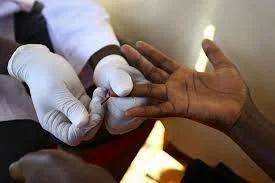In the fight against HIV/AIDS, new findings from UNAids show both achievements and pressing obstacles that require focus. Despite advancements in reducing infections in sub Saharan Africa other areas are experiencing concerning rises indicating a pivotal moment, in the global health crisis.
Global Shifts in HIV Infections
Year marked a change, in the landscape of HIV infections with a majority of new cases now emerging outside of sub Saharan Africa. This shift highlights the effectiveness of prevention initiatives in Africa, where infections have seen a decline of 56% since 2010. On a scale there has been a 39% decrease in infections, during the timeframe showcasing the collaborative efforts made worldwide.
The increase, in challenges
Although progress has been made areas such as Europe, central Asia, Latin America and certain parts of the Middle East and north Africa are witnessing a surge in infection rates. This concerning development emphasizes differences in prevention approaches. Emphasizes the requirement for focused interventions, in these regions.
Societal Barriers and Human Rights
Winnie Byanyima, who serves as the director of UNAids highlights a concerning development; the reemergence of human rights issues, in nations. Biased legislation and and reductions, in funding are obstructing communities ability to obtain HIV treatment and preventive measures. This backward movement jeopardizes the advancements achieved over years.
The Role of Leadership and Funding
Leadership plays a role, in shaping the course of the HIV/AIDS pandemic whether in government or business. According to Dr. Sharon Lewin from the International Aids Society, continuous dedication and financial support can help reduce infection rates in areas, with resources.
Innovations and Inequalities
The emergence of extended release medications, for treating and preventing HIV brings optimism for virus control. Nevertheless the uneven availability of these advancements in countries presents a notable obstacle. Immediate actions are essential to guarantee access, to these vital life saving treatments.
The Road Ahead: 2030 and Beyond
Global leaders made a commitment, in 2015 to eradicate AIDS as a public health concern by 2030 as part of the UN Sustainable Development Goals. Yet recent data suggests that progress towards this target is lacking. Byanyima highlights the urgency for action such as debt forgiveness and heightened assistance to strengthen healthcare systems, in affluent nations.
Addressing Vulnerabilities
In Saharan Africa young women continue to face an impact of HIV/AIDS compared to other groups mainly due, to inequalities in society and the economy. Byanyima emphasizes the need, for policies that focus on education and empowerment to decrease vulnerabilities within this demographic.
Call to Action
The global effort, against HIV/AIDS calls for a front. It entails more than advancements in medicine and financial support; it also necessitates a dedication, to defending human rights and addressing prejudice and bias. Each person and group has a part to fulfill in guaranteeing that everyone is included in the mission to eradicate AIDS by 2030.
Affiliate Links and Resources
To show your support, for the efforts of organizations combatting HIV/AIDS you may want to consider making donations to known NGOs like amfAR, UNAids or The Global Fund. You could also look into resources such, as lasting HIV medications that have the potential to improve treatment adherence on a scale.
In closing while there has been progress it is crucial for the international community to intensify its actions in tackling the remaining challenges. Through efforts and solidarity we can work towards realizing a world from the burden of HIV/AIDS by 2030.


